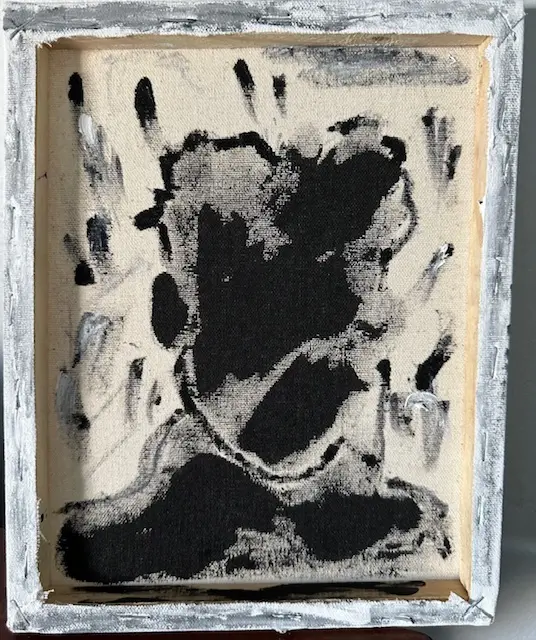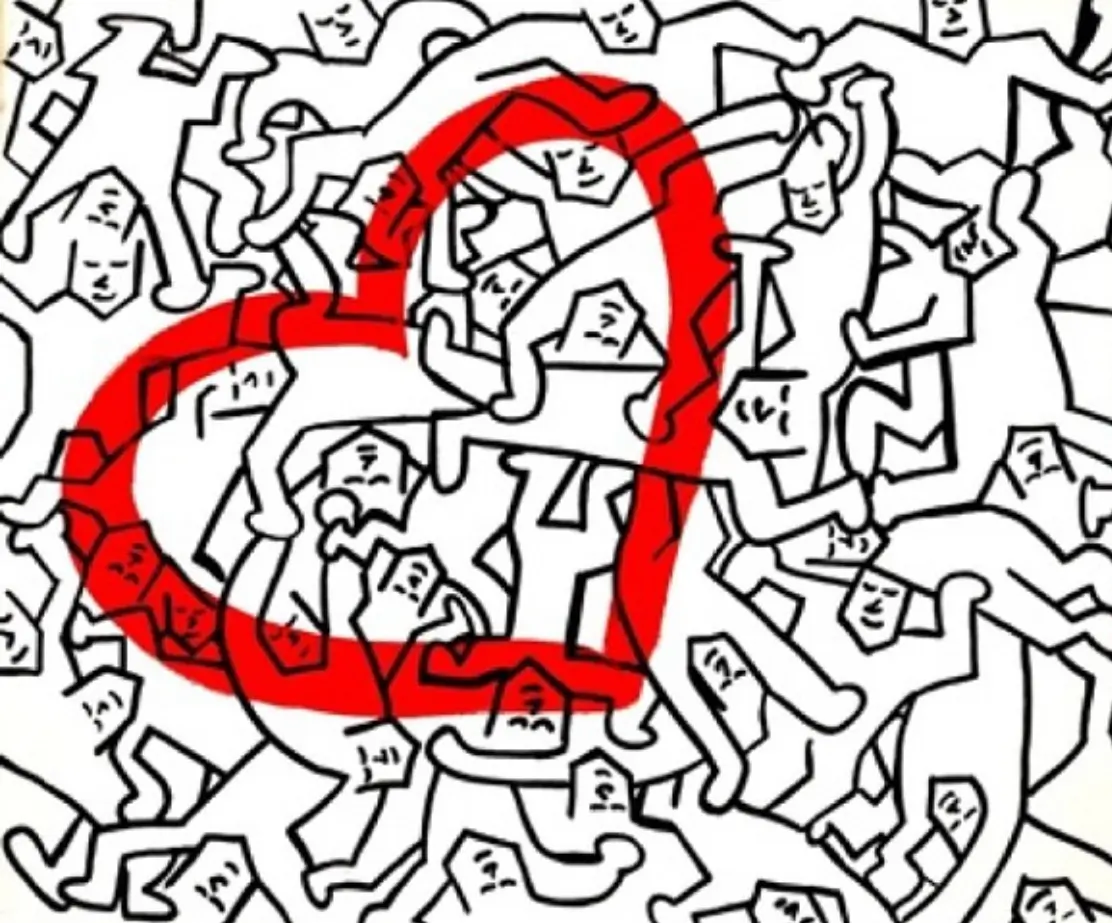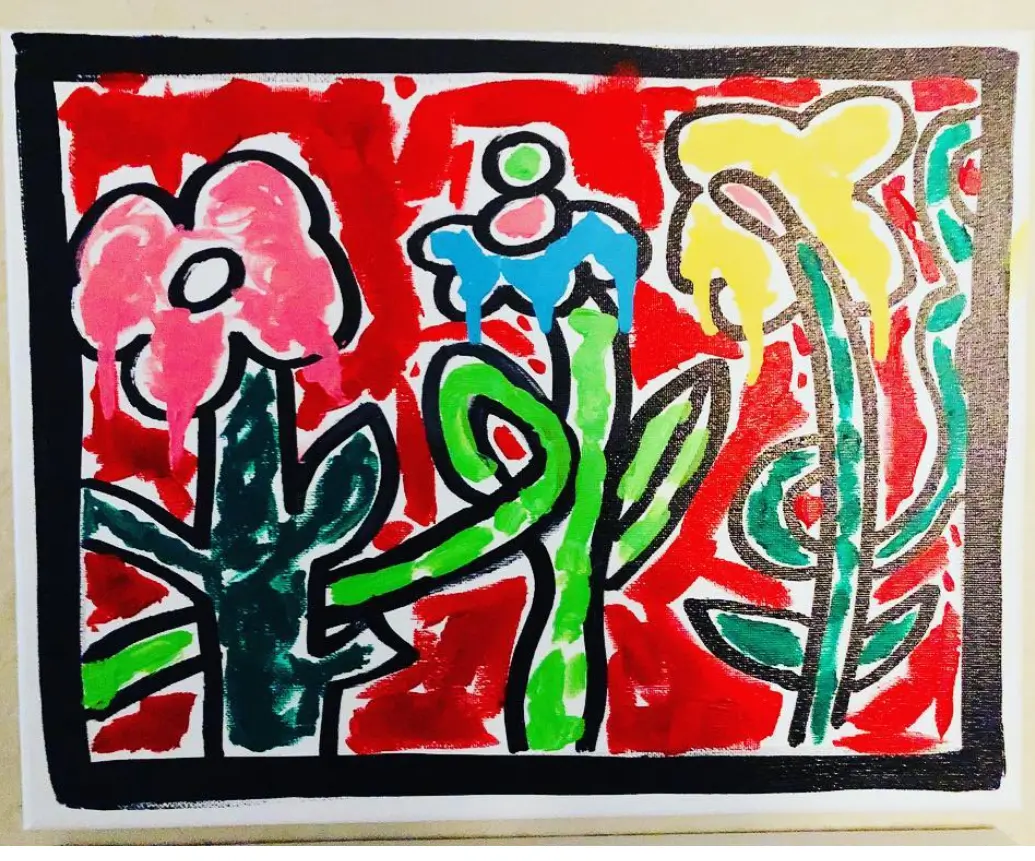Jean-Michel Basquiat was a groundbreaking artist, known for his dynamic and thought-provoking pieces that challenged the conventions of the art world. His work blended multiple mediums and styles, drawing on influences from graffiti, jazz, and African art.
Basquiat’s art was important because it provided a voice for marginalized communities and highlighted broader social and political issues. He addressed topics such as racism, police brutality, and the exploitation of Black bodies in his work, opening up important discussions and shedding light on important issues.
His art also had a lasting impact on contemporary art, inspiring many artists to push boundaries and challenge the status quo. In this article, we will explore the life and work of Jean-Michel Basquiat, analyzing the significance of his unique creations and examining his enduring legacy.
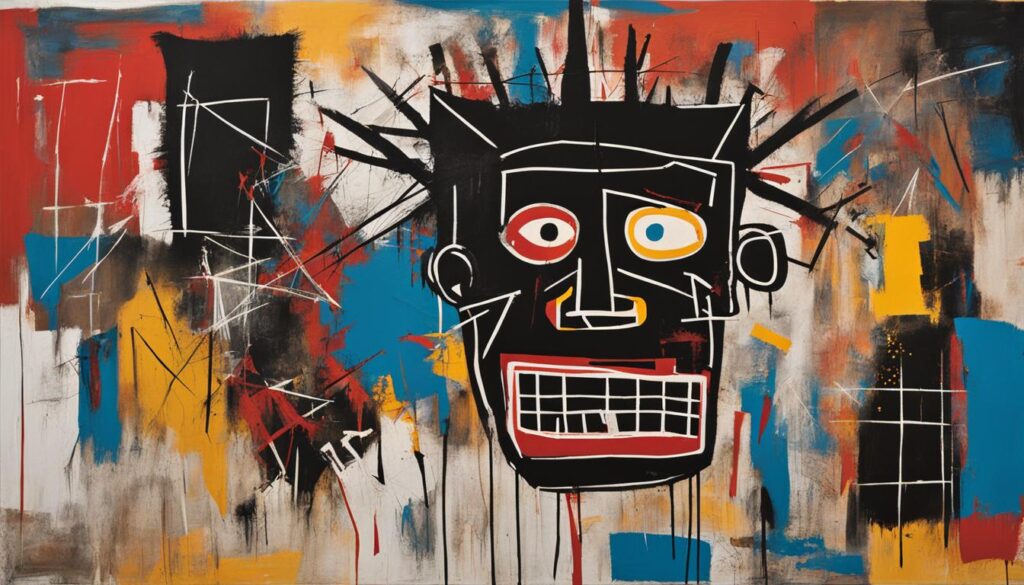
All About Jean-Michel Basquiat:
- Jean-Michel Basquiat was a groundbreaking artist who challenged the conventions of the art world.
- His work addressed important social and political issues, providing a voice for marginalized communities.
- Basquiat’s art continues to inspire contemporary artists today, leaving a lasting impact on the art world.
Early Life and Background of Jean-Michel Basquiat
Jean-Michel Basquiat was born on December 22, 1960, in Brooklyn, New York. His mother, Matilde, was of Puerto Rican heritage, while his father, Gerard, was Haitian. Basquiat’s parents separated when he was just seven years old, with his mother taking him and his two sisters to live with her in Puerto Rico for a year. This experience introduced him to the vibrant art and cultural scene of the island, which would go on to influence his work.
When Basquiat returned to Brooklyn, he enrolled in city-funded art programs and developed his skills as a young artist. His style was heavily influenced by the street art and graffiti he saw in the city, as well as the African American and Puerto Rican cultural movements that were gaining momentum at the time.
Basquiat dropped out of high school at the age of 17, and soon after, he left home to live on the streets of New York City. During this period, he formed a close friendship and artistic partnership with the graffiti artist Al Diaz, leading them to collaborate on the iconic “SAMO” graffiti tags that gained them notoriety throughout the city.
“I was a really lousy artist as a kid. Too abstract expressionist, or I’d draw a ram’s head, really messy. I’d never win painting contests. I remember losing to a guy who did a perfect Spiderman.” – Jean-Michel Basquiat
Basquiat’s art gained critical acclaim in the 1980s, with several high-profile collaborations, exhibitions, and sales, leading him to global recognition before his untimely death in 1988.
Basquiat’s Rise to Prominence in the Art Scene
After years of working as a graffiti artist in New York City, Jean-Michel Basquiat began to attract attention from the art world in the early 1980s. His unique style and provocative subject matter quickly garnered critical acclaim, and he soon found himself at the forefront of the contemporary art scene.
Basquiat’s collaborations with other artists and prominent figures helped to elevate his profile even further. He famously worked with fellow graffiti artist Al Diaz under the pseudonym SAMO, gaining notoriety for their politically-charged and socially-conscious artwork.
However, it was his collaboration with renowned artist Andy Warhol that truly solidified Basquiat’s position in the art world. The two artists worked together on a number of pieces, including the famous “Olympic Rings” painting, which showcased their complementary styles and mutually beneficial partnership.
Basquiat’s work continued to gain prominence throughout the 1980s, as he exhibited in galleries and museums around the world. His unique blend of African and American cultural references, along with his use of text and image, helped to establish him as one of the most exciting and innovative artists of his time.
Despite his untimely death at the age of 27, Basquiat’s influence on the art scene has continued to grow in the decades since his passing. His work is now seen as a vital bridge between street art and the established art world, and his impact on contemporary art cannot be overstated.
The Themes and Techniques in Basquiat’s Artworks
Basquiat’s artworks are known for their powerful themes and unique techniques, which set them apart from other contemporary pieces. One dominant theme in Basquiat’s works is his commentary on race, inequality and social injustice. Through his art, Basquiat highlighted the plight of African Americans in modern society and challenged traditional notions of power and privilege.
Another key theme in Basquiat’s works is his fascination with the human condition. Basquiat’s paintings often featured crude yet evocative sketches, focused on the human face and form. His figures were expressive, at times suggestive of violent or degraded states, yet they conveyed a sense of vulnerability and raw emotion that spoke to the viewer on an intensely personal level.
Basquiat’s unique approach to painting and drawing has also been the subject of much discussion among art experts and enthusiasts. He used a range of techniques to achieve his signature style, including the application of thick, gestural strokes of paint, collage and the integration of poetry and words into his pieces.
An example of Basquiat’s use of techniques can be seen in his 1982 piece, “Untitled.” The painting depicts two opposing dark-skinned warriors, with a bright yellow background and bold red text overlaying the top of the painting. The thick, black gestural strokes give the figures a dynamic and raw energy, while the poetic language alludes to the oppression and struggle of black Americans in the 1980s.
“Basquiat’s works stand out for their powerful themes and unique techniques. He challenged traditional notions of power and privilege, and his figures conveyed raw emotion that spoke to the viewer on an intensely personal level.”
Overall, Basquiat’s works are layered with meaning, combining powerful themes with distinctive techniques to create works of art that have stood the test of time.
Famous Basquiat Artworks That Defined His Career
Throughout his career, Jean-Michel Basquiat created numerous artworks that left an indelible mark on the history of modern art. Here are a few of his most famous pieces that defined his artistic journey:
| Artwork | Description | |
|---|---|---|
| Untitled (1982) | A vibrant and text-heavy graffiti-inspired painting that signified Basquiat’s signature style. | |
| Charles the First (1982) | A portrait of a fictional character that speaks to Basquiat’s interest in African American history and heritage. | |
| Per Capita (1981) | A commentary on racial inequality and division in the US, featuring Basquiat’s signature skull motif. | |
| Flexible (1984) | A mixed-media work that speaks to Basquiat’s experimentation with different artistic forms and mediums. |
These artworks not only represent the diversity and depth of Basquiat’s creative vision, but also speak to the impact he had on the art world and beyond. His bold, expressive style continues to influence contemporary artists and enthusiasts alike, cementing his legacy as one of the most innovative and significant artists of the past century.
The Collaboration Between Madonna and Jean-Michel Basquiat
Madonna is known not just for her music but also for her art collections. She was a big fan of Jean-Michel Basquiat, and the two of them became friends in the 1980s when Basquiat was at the height of his career. They even had a brief romantic relationship that eventually ended, but the impact they had on each other’s artwork was long-lasting.
Basquiat’s influence on Madonna’s music and performances was apparent in her test print album for “Like a Virgin,” which Basquiat hand painted, but was later switched out for the famous image of Madonna wearing a wedding gown, version, we know today. More on this below. Madonna, in turn, had an impact on Basquiat’s artwork, collaborating with him on a few pieces. One of the most notable collaborations was their live painting session at the “Artists Against Apartheid” benefit show in 1986, where they painted on a canvas together while Keith Haring danced around them.

“Everything sounds better coming out of Madonna’s mouth, including my name.” – Jean-Michel Basquiat
Madonna’s influence on Basquiat was primarily in terms of exposure. Through her fame and popularity, she helped bring Basquiat’s artwork to a wider audience, which helped boost his career. Their brief but impactful collaboration is a testament to the creative energy that can be generated when two great artists come together.
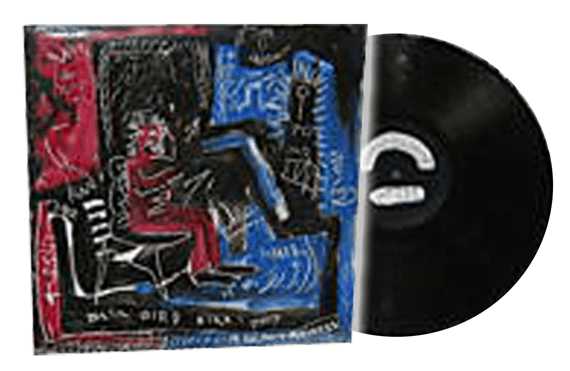
Madonna – Like a Virgin, Test Press (Alternate Cover – fetched $8100 on eBay)
In August 2008, an individual selling items on eBay in Italy listed Madonna’s “Like a Virgin” vinyl record, that was totally different, as distinguished by its one-of-a-kind hand-painted cover. The seller seemed to either genuinely be unaware of the unique nature of the item but speculated it may have been hand painted by Madonna’s ex-lover and friend Basquiat. However, potential buyers well acquainted with the significance of Madonna’s well-known “Like a Virgin” vinyl record album cover, were fully aware of its distinctiveness. Surprisingly, the record was eventually sold for a seemingly modest sum of $8,100, a price that may be considered remarkably low given its unique attributes.
The story behind this intriguing listing unfolds when the Italian eBay seller acquired the Madonna record, along with other items, at the Utrecht Record Fair from an American seller. Initially, he was unaware of its identity due to the absence of clear provenance, but the captivating hand painted cover caught his attention.
Curious about the record’s origins, he inquired with the American seller, who claimed it belonged to his sister and provided no further information. Upon returning to Italy, the seller played the vinyl and quickly recognized it as Madonna’s “Like a Virgin.” Seeking information from friends to confirm who painted the test album, he yielded no results.
The eBay listing included a description emphasizing the handmade cover’s uniqueness, featuring a peculiar front painting and a back adorned with graffiti, including the name “J. M. Basquiat,” likely the artist responsible for the artwork.
An intriguing aspect of this narrative is the brief relationship between Jean Michel Basquiat and Madonna in 1982. At the time, Basquiat was an established artist, while Madonna was on the verge of her musical breakthrough with her eponymous debut album in 1983. Although the couple parted ways the same year, they maintained an amicable connection. Notably, photos exist of Jean-Michel Basquiat attending Madonna’s “Like a Virgin” record release party in New York City on November 12, 1984, and an after-party for The Virgin Tour on June 6, 1985, captured by none other than Andy Warhol.
Considering their connection, it’s plausible that the test press copy in question was a gift from Madonna to Basquiat, with the artist creating the distinctive cover. In the realm of test press vinyl records, typically produced in small quantities (around 5 to 10 copies) just before mass production, they serve to assess sound quality and usually lack printed covers or additional elements. Such copies are often retained by the producer, the record company, or the artist. Sometimes they use the art made or switch it out for the final pressing that is distributed as the official album cover.
If the cover indeed bears the authentic work of Basquiat, the fascinating journey of this record becomes a subject of interest. How did it transition from the cutting plant to Basquiat’s possession and, eventually, into the hands of the seller at the Utrecht Record Fair?
This unique vinyl record was auctioned on April 8, 2008, on eBay under the title “MADONNA Like a Virgin ALTERNATE COVER MINT,” with no mention of Basquiat by the seller. Two possibilities arise: either the seller was unaware of Basquiat, a doubtful scenario given the ease of obtaining information via a simple Google search, or, more likely, the seller hesitated to acknowledge Basquiat’s involvement, perhaps fearing repercussions from the artist’s family, who manages his brand.
Following 56 bids, the record fetched $8,100. The culmination of these events weaves a captivating tale, leaving one to ponder how much more the vinyl might have garnered if all the intricate details were known. The sale, deemed modest by some, gains perspective when compared to the art market, where a Basquiat painting from 1982 was auctioned for a staggering $110.5 million in 2017.
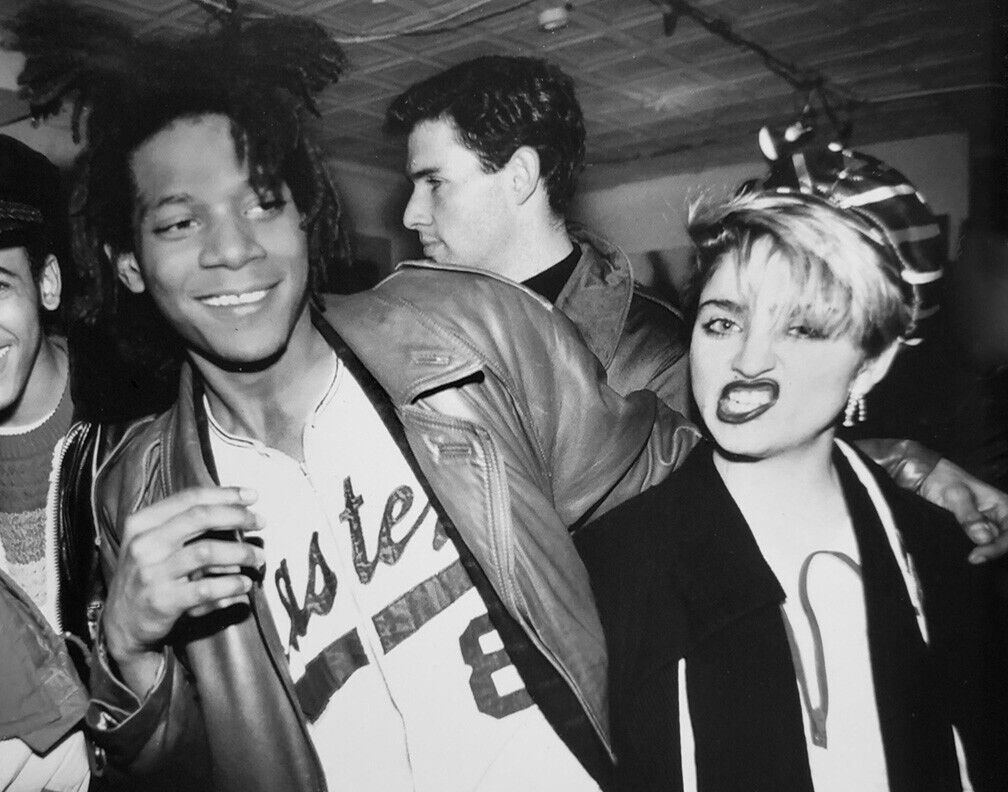
Basquiat’s Legacy and Influence on Contemporary Art
Jean-Michel Basquiat’s art has left an indelible mark on the contemporary art scene, inspiring an entire generation of artists and creatives. Basquiat’s unique style and unconventional approach have influenced a multitude of contemporary artists across various fields, from painting and sculpture to street art and beyond.
One of Basquiat’s enduring legacies has been his ability to address critical social and political issues through his art, breaking down barriers and challenging norms in the process. His uncompromising approach to his artwork, combined with his messages of social justice, continue to resonate with audiences worldwide, ensuring his relevance in today’s art world.
Basquiat’s influence can be seen in the works of many successful contemporary artists, including Kaws, Banksy, and Takashi Murakami, among others. His impact is also reflected in the commercial art market, with his work breaking records at auctions and commanding high prices among collectors.
“Basquiat was as important to the 1980s as Warhol was to the 1960s. He tapped into a raw, youthful, urban energy that really polarised the art world. When you look back at that decade, Basquiat made art that was a mirror of that time – it was vibrant, excessive, and riddled with contradictions.”
Basquiat’s Influence on Street Art
Basquiat’s signature graffiti-inspired style has had a profound impact on street art, inspiring countless artists to take their vision to the streets. His work has become synonymous with urban culture, helping to bridge the gap between the world of fine art and everyday life.
The Basquiat Foundation
The Basquiat Foundation was established in 1988 to preserve and promote the legacy of the artist. The Foundation supports arts organizations and charities, and also hosts exhibitions and events showcasing Basquiat’s work and influence.
| Basquiat’s influence on contemporary art | Details |
|---|---|
| Social Issues | Basquiat’s art addressed critical social and political issues, inspiring other artists to do the same. |
| Commercial Success | Basquiat’s artworks command high prices among collectors and have broken records at auctions. |
| Street Art | Basquiat’s signature style has had a profound impact on street art, bridging the gap between fine art and everyday life. |
| The Basquiat Foundation | The Foundation preserves and promotes Basquiat’s legacy, supporting arts organizations and hosting exhibitions of his work. |
Basquiat’s Life and Untimely Death
Basquiat’s meteoric artistic journey was cut short by his untimely death at the young age of 27. Despite his short life, he left an indelible mark on the art world, creating a legacy that continues to inspire artists to this day.
Born in Brooklyn, New York in 1960, Basquiat had a tumultuous childhood marked by his parents’ divorce and his mother’s hospitalization due to mental illness. These early experiences had a profound impact on his art, which often explored themes of identity and race.
As an adult, Basquiat struggled with drug addiction and tragically passed away in 1988 due to a heroin overdose. His death was a devastating loss for the art world, robbing us of a brilliant and visionary artist with boundless potential.
Despite his short life, Basquiat’s impact on contemporary art cannot be overstated. His unique style, which combined elements of street art, graffiti, and traditional painting techniques, continues to captivate viewers and inspire artists around the world.
Basquiat’s Art Market and Collectors
Since his tragic death in 1988 at the young age of 27, Jean-Michel Basquiat’s artworks have gained significant recognition and value in the art market. His unique style, bold messages, and powerful themes continue to captivate collectors and art enthusiasts alike.
Collectors have avidly sought out Basquiat’s works for their personal collections, causing a surge in demand and value for his creations. Some of the most notable collectors of Basquiat’s works include Swiss billionaire Ernesto Bertarelli, rap mogul Jay-Z, and actor Johnny Depp.
The art market for Basquiat’s works has shown significant growth over the past decade, with record-breaking sales at auctions. In May 2017, Basquiat’s piece “Untitled” sold for a staggering $110 million, setting a new record as the highest-priced artwork sold by any American artist.
| Name of Artwork | Year created | Selling price |
|---|---|---|
| Untitled | 1982 | $110 Million |
| Dustheads | 1982 | $48.8 Million |
| Untitled Skull | 1982 | $22.5 Million |
Today, Basquiat’s works remain highly sought after, and his influence on the contemporary art world continues to resonate. The impact of his groundbreaking style and themes can be seen in the works of emerging artists, highlighting the significance of Basquiat’s art in shaping the direction of modern art.
Basquiat’s Art Lives On
From his early beginnings as a street artist to his rise to prominence in the art world, Jean-Michel Basquiat was a visionary whose creativity surpassed all boundaries. His unique approach to art and his fearless embrace of cultural diversity continue to inspire and influence artists around the world, even years after his untimely death. With his signature motifs of crowns, skulls, and enigmatic phrases, Basquiat created works that challenged the status quo and pushed the boundaries of conventional art forms. Remembered as a true icon of our time, his legacy lives on through his unforgettable art and continues to captivate audiences with its raw and powerful expression. Jean-Michel Basquiat’s profound impact on contemporary art remains undeniable, and his influence will continue to shape and inspire generations to come.
More About Jean-Michel Basquiat
Who was Jean-Michel Basquiat? What makes his art important?
Jean-Michel Basquiat was an influential American artist known for his distinctive style and powerful messages. His art combines elements of street art, graffiti, and neo-expressionism, tackling themes of race, identity, and social commentary. Basquiat’s artwork is important because it challenged traditional notions of fine art and had a profound impact on the contemporary art scene.
What was the early life and background of Jean-Michel Basquiat?
Jean-Michel Basquiat was born in Brooklyn, New York, in 1960. His mother was Puerto Rican, and his father was Haitian. As a child, Basquiat showed a talent for art, and his mother encouraged his creative pursuits. Basquiat drew inspiration from a variety of sources, including African, Aztec, and Greek art, as well as jazz and street culture.
How did Basquiat rise to prominence in the art scene?
Basquiat gained recognition in the late 1970s as part of the graffiti duo SAMO. He transitioned to the gallery scene in the 1980s, showcasing his unique style and attracting the attention of influential art figures. Basquiat’s talent and charisma propelled him to international fame, with solo exhibitions and collaborations that solidified his place in the art world.
What are the themes and techniques in Basquiat’s artworks?
Basquiat’s artworks explore themes of racism, class struggle, cultural heritage, and personal identity. He often incorporated text, symbols, and abstract figures into his paintings, layering meanings and creating powerful visuals. Basquiat used bold, expressive brushstrokes and vibrant colors to convey emotions and provoke thought.
Which famous Basquiat artworks defined his career?
Some of the most famous artworks by Basquiat include “Untitled (Skull)” (1981), “Hollywood Africans” (1983), and “Irony of a Negro Policeman” (1981). These pieces showcase his distinctive style and powerful social commentary, cementing his reputation as a visionary artist.
What was the collaboration between Madonna and Jean-Michel Basquiat?
Madonna and Jean-Michel Basquiat had a brief romantic relationship in the early 1980s. They collaborated on the artwork for Madonna’s album “Like a Virgin” (1984), with Basquiat creating the original cover art, which was scrapped when the album was about to be released. The collaboration between these two influential figures symbolized the intersection of art, music, and pop culture.
What is Basquiat’s legacy and influence on contemporary art?
Basquiat’s legacy is profound, as his art continues to resonate with audiences and inspire young artists. His unique blend of social commentary, powerful visuals, and cultural references challenged traditional art norms and paved the way for future generations of artists to push boundaries and explore unconventional mediums.
What was Basquiat’s life and untimely death?
Basquiat struggled with drug addiction throughout his life. Tragically, he passed away in 1988 at the age of 27 from a heroin overdose. His untimely death cut short a promising career and left a void in the art world.
What is Basquiat’s art market and collectors?
Basquiat’s artworks have become highly sought after by collectors and institutions around the world. His pieces have reached record-breaking prices at auctions, making him one of the most valuable and influential artists in contemporary art. Collectors recognize the significance and enduring appeal of Basquiat’s work, contributing to his continued presence in the art market.
Basquiat’s Legacy
Jean-Michel Basquiat’s art and legacy are of immense importance in the art world. His unique style, powerful messages, and boundary-pushing techniques continue to captivate audiences and inspire artists today. Basquiat’s impact on contemporary art is undeniable, and his enduring influence ensures that his artwork will be celebrated for generations to come.




